Bird’s Eye View


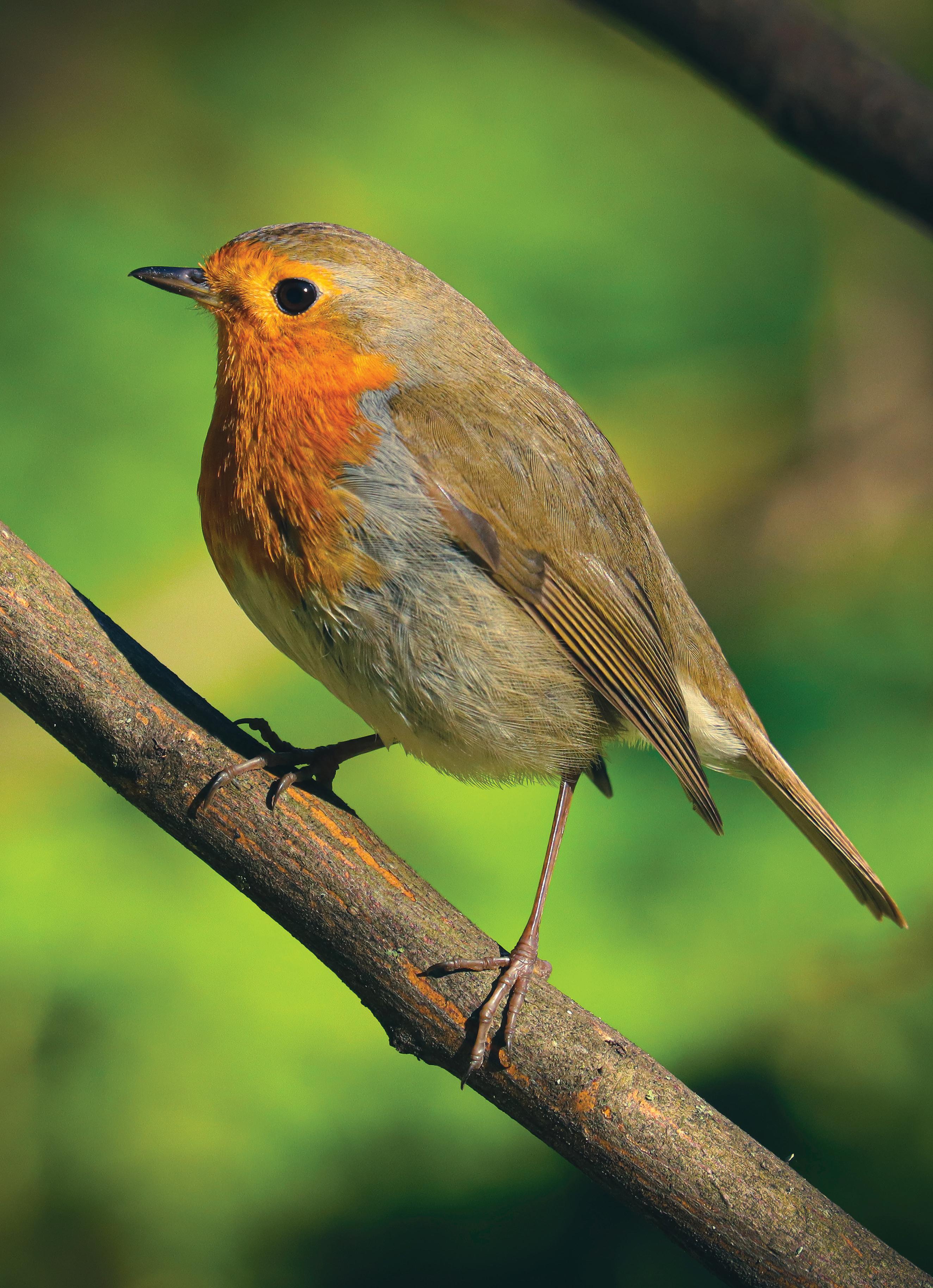
Issue 74 • December 2022
A BirdLife Malta members’ magazine
This year we celebrated 60 years as an organisation, but more importantly we celebrated 60 years of activism by hundreds of individuals who throughout these years have given their time, energy and dedication to building and forming BirdLife Malta into the organisation it is today. An NGO is just as much about its cause
CRIME AND PUNISHMENT
The culprits in this list were all brought to justice after being observed and reported by BirdLife Malta teams
Sep 2022. Hunter given 1yr in prison + hunting licence suspension for life. CRIME: shooting protected Greater Flamingos (Qawra Pt, Oct 2021) Case under appeal
Sep 2022. Hunter fined €3,000 + hunting licence suspension for life. CRIME: Hunting during close season (Xgħajra, Apr 2017)
Sep 2022. Trapper fined €500 + 2yr trapping licence suspension. CRIME: Possession of protected bird species (Żurrieq, Oct 2021)
Nov 2022. Trapper fined €600 + 2yr trapping licence suspension. CRIME: Leaving trapping gear on site during close season (Wardija, Feb 2022)
Nov 2022. Trapper fined €1,200 + 2yr trapping licence suspension. CRIME: Finch trapping during close season (L-Aħrax, Mar 2021)
Nov 2022. Trapper fined €1,200 + 2yr trapping licence suspension. CRIME: Finch trapping during close season (Dingli, Mar 2022)
Nov 2022. Trapper fined €900 + 2yr trapping licence suspension. CRIME: Finch trapping during close season (Marsaskala, Apr 2022)
Nov 2022. Taxidermist fined €5,000 + taxidermy licence suspension for life. CRIME: Possession of 17 protected species and taxidermy equipment (Luqa, May 2022)
as it is about its people. For sure, the founders who formed the Malta Ornithological Society 60 years ago had a vision, but I wonder if they could imagine the organisation we are today. Over time many NGOs die a natural death, yet this organisation has endured and grown. But let us remember that an organisation isn't an abstract thing or a self-sustaining organism. It doesn't grow on its own. It is the people who form the organisation that helped it grow and evolve. In small gradual steps, it has changed and adapted, remaining at the forefront. The BirdLife Malta of today has changed from the MOS of 60 years ago, but so has society and the challenges birds and biodiversity face. The changes have only made us more relevant today than ever before.
And my message today is focused on this: the gratitude we owe those men and women who throughout these 60 years left their mark, however small or substantial. And there have been many, too many to mention. It is a tribute to those who helped create nature reserves, planted trees, gave talks, organised outings, made flyers, attended protests, joined camps, motivated kids, drew posters, ringed birds, gave advice, made research, sold stickers, picked up or cared for injured birds, shovelled soil, led walks, wrote letters, newsletters and articles, books and magazines; to those who got blistered hands, got drenched or sunburnt, got beaten up or shot at; to those who made new and unlikely friends with maybe one thing only in common: YOU are BirdLife Malta. Wishing you all a Merry Christmas and a Happy New Year.
Darryl Grima President
Contents

2 Bird’s Eye View 74 • December 2022
YOU are BirdLife Malta!
Contact
mailing
tel
•
•
Nathaniel
&
Comment 2 News 3-4 European Robin 5 Nature at our reserves:
6-7 It's Time...to give youth a voice 8-9 Campaign 10 Tracking the elusive
11 A wintry stroll at
12-13 Events & activities 14-15 Testing the waters... 16
BirdLife Malta Council Darryl Grima (President), Norman Chetcuti (Treasurer), Denise Casolani (Council Secretary), James Aquilina, Kathleen Galea, Eurydike Kovacs, Caldon Mercieca, Paul Portelli, Raphael Soler, Steve Zammit Lupi (members) Senior Management Team Mark Sultana (CEO), Nicholas Barbara (Head of Conservation), Mark Gauci (Head of Land Management), Stefania Papadopol (Education Manager), Nathaniel Attard (Communications Manager), Arturo Palomba (Finance Manager), Manuel Mallia (Salina Park Manager), Manya Russo (LIFE PanPuffinus! Project Manager), Janet Borg (Office Coordinator).
BirdLife Malta
address: 57/28 Abate Rigord Street, Ta’ Xbiex XBX 1120, Malta
+356 21347645/6
email info@birdlifemalta.org
website www.birdlifemalta.org Design Jody Fiteni, Milena Berezina Printing Poulton’s Print Front cover photo European Robin by Jonathan Caruana © 2022 BirdLife Malta. All rights reserved. Reg. Vol. Org. VO/0052 Editorial Board
Attard (Editor), Victor Falzon (Naturalist
Field Teacher), Ilaria Marchiori (Communications Assistant), Jody Fiteni (Design & Digital Media Officer), Milena Berezina (Design & Digital Media Assistant), Nastasya Koroleva (Events & Outreach Assistant)
Għadira
Chameleon
Tal-Wej
A shot European Turtle-dove
BirdLife Malta takes Government to court
BirdLife Malta has filed a court case challenging the Government’s decision to open a spring hunting season in April 2022 on the European Turtle-dove, a Vulnerable species. BirdLife Malta is asking the court to declare the practice illegal, with a view to achieve a permanent ban on hunting of Turtle-doves in spring.
A moratorium on spring hunting was revoked following the general elections, which paved the way for the Government to re-open Turtle-dove hunting in spring. Meanwhile there are also indications that the European Commission is considering opening an Infringement Procedure against Malta.


A historic court judgement delivered on 3 October, penned by Judge Lawrence Mintoff, annulled the secret Government concession handing over Il-Miżieb and L-Aħrax woodlands to hunting federation FKNK. BirdLife Malta, with Moviment Graffitti, Din l-Art Ħelwa, Friends of the Earth Malta and Prof. Edward Mallia had taken the Lands Authority to court after the agreement was signed in secret following a public outcry against the deal. In his decision, Judge Mintoff stated that "the agreement signed between the Lands Authority and the FKNK on 9 October 2020 is null, as it was not done according to the law."
In mid-September, a GPS-tagged European Honeybuzzard that hatched in Finland earlier this summer, started its migratory journey south. Over three weeks it crossed 10 European countries, then crossed the Adriatic Sea into Italy. On 8 October the Honey-buzzard left Sicily and reached Gozo early in the afternoon, then headed to Buskett where it was observed by BirdLife Malta birdwatchers at around 5pm. Some time later the Honey-buzzard was found dead in a private garden, where it landed after it was shot down. A post-mortem by vets confirmed the presence of large lead pellets in the bird’s body as the cause of death. The Honey-buzzard had been tracked as part of a post-doctoral research on the migratory behaviour of these birds of prey.

Bird’s Eye View 74 • December 2022 3 News
BirdLife Malta
Hunters’ land concession annulled
October 2020 Spazji Miftuħa sit-down protest against the secret deal
Nathaniel Attard
Finnish raptor killed in Malta
European Honey-buzzard found dead
Nicholas Barbara
BirdLife Malta and Din l-Art Ħelwa, who jointly manage Foresta 2000 Nature Reserve, have filed separate objections to the Planning Authority in relation to a planning application to redevelop the site of the former Festaval Hotel in the area. The application seeks to build a five-floor hotel with pool, restaurants, parking, etc., all this within the Natura 2000 site. Since 2003, this large swathe of land between the Red Tower and Għadira Nature Reserve has gradually been grown into a stretch of Mediterranean woodland habitat, which is now maturing into an important green lung. As it falls within the limits of a Bird Sanctuary, the site is also the only area around Mellieħa where hunting and trapping are not permitted. The proposed development, which sits right in the heart of the area, directly threatens the ecological, recreational and educational value of Foresta 2000.



Rampant illegalities this autumn
BirdLife Malta is satisfied that the hunter who shot down and killed four Greater Flamingos from Qawra Point in October 2021 has been sentenced to a year in prison, had his shotgun confiscated and his hunting licence revoked for life. The massacre clearly showed why BirdLife Malta has repeatedly called on Government to declare this strategic spot a no-hunting zone. Now, almost a year after the killing, Government has declared Qawra Point a nature reserve. The islet’s new protected status will make it safer for migratory birds to rest there as well as fly over the site safely on their way to Salina Nature Reserve.
National Strategy for the Environment
Lack of self-discipline by hunters and lack of police presence have again led to rampant illegalities during this year’s autumn hunting season. During our annual three-week Raptor Camp in September, volunteers witnessed over 170 illegalities, with protected birds shot even before the season began. Police were down to just one unit in Malta and none in Gozo, leading BirdLife Malta to focus future efforts on Gozo. The number of shot protected birds recovered by BirdLife Malta and police so far confirms the increasing trend of past years – from 2018 to date, 700 protected birds were confirmed shot in contrast to 266 in the previous five-year period (2013–2017). The season runs until 31 January 2023.
Dinja Waħda Awards 2022
In the past months we joined several other eNGOs in a call on the Environment and Resources Authority to be bolder and more ambitious in its vision for the environment. In our response to the draft National Strategy for the Environment 2050, we stated that the document almost completely omits reference to climate change, strategic objectives have no specific targets and while the strategy proposes changes in consumer patterns and suggests that sustainable economic growth be measured beyond GDP, it proposes none of the methods currently being adopted around the world. We also called on the Government to give the national strategy document legal status to guarantee enforceability, so as to avoid another useless document picking dust on a shelf.
A total of 78 Primary and Secondary schools have been awarded for helping to connect children with nature through BirdLife Malta’s Dinja Waħda environmental education programme. Dinja Waħda is run in collaboration with the Directorate for Learning & Assessment Programmes and is supported by Bank of Valletta. The Dinja Waħda 2022 Awards Ceremony was held on 24 November at Esplora Interactive Science Centre. Apart from celebrating the success of the 2021-22 scholastic year, the event also marked the launch of a new year of engagement.


4 Bird’s Eye View 74 • December 2022 News
WORDS Ilaria Marchiori BirdLife Malta Communication Assistant
BirdLife
Malta
Jody Fiteni
Flamingo killer guilty, Qawra Point protected
Aron Tanti
Aron Tanti
Jody Fiteni
Dinja Waħda Awards 2022 ceremony
Strategy for the environment drafted
Qawra Point is now a protected nature reserve
Briefing the media about the autumn hunting season
Leave Foresta 2000 alone!
Former Festaval hotel ruins
MALTESE NAME: Pitirross
SCIENTIFIC NAME: Erithacus rubecula
LENGTH: 12.5-14cm
WING SPAN: 20-22cm
CONSERVATION STATUS: Least Concern
LOCAL STATUS: Very common autumn migrant and winter resident, with a smaller return passage in spring. Small numbers present also throughout the rest of the year
CALL: A short, hard, often repeated ‘tick’. Also a thin and sharp ‘tsip’, especially when alarmed. Song consists of a melodious warble with several drawn out, fading notes BEHAVIOUR: Highly territorial and will fiercely attack intruders into its territory both during the breeding season as well as in winter quarters HABITAT: Breeds in woodland, gardens and parks. In winter also found in more open habitat
European Robin
Being strongly associated with Christmas the European Robin is undoubtedly one of the most familiar small passerines. It has olive-brown upperparts, including wings and tail and a distinctive orange-red face and breast. The face is lined with grey. The rest of the underparts are white. The eyes are large and the legs relatively long. Sexes are alike. Juveniles lack the orange face and breast and have a finely spotted olive-brown plumage. Adult plumage is attained following their first moult later in summer.
The European Robin occurs in Europe as far north as northern Scandinavia and east to the Caucasus and south to the Mediterranean coast of North Africa. Northern and eastern populations are migratory, wintering in western Europe and around the Mediterranean. The population breeding in the British Isles is largely sedentary. Ringing recoveries have shown that birds reaching the Maltese Islands in autumn and winter originate mainly from central, northern and north-eastern Europe. Many wintering birds have been retrapped (caught again) at their place of ringing in successive years. Others have been recovered along the North African coast both in the same as well as in later winters.
The first arrivals are recorded at the end of September, numbers reaching a peak in late October and early November. Local movements among wintering birds are not uncommon and a smaller return passage takes place in early spring mainly from midFebruary to late March. A few bleached migrants regularly turn up in early May; these could well be birds that had ventured beyond North Africa and wintered in sub-Saharan areas. Although small numbers are present throughout summer, Robins have never been known to nest in Malta. BirdLife Malta ringers, who handle several
summer Robins at various sites, have never found Robins with signs of breeding activity (e.g. an incubation patch); also, no nests or juvenile birds have ever been found.
The Robin is one of the best known and loved birds in the Maltese Islands. Although locally it is not generally as confiding as in northern European countries, Robins visiting gardens in urban areas do get accustomed to human presence and often become very confiding. In past years, however, Robins were locally trapped in large numbers, despite being a protected species. In BirdLife Malta’s publication Il-Merill No. 3 (December 1970) it was reported that an estimated 20,000 Robins had been trapped in October and November of that year alone and that MOS (short for Malta Ornithological Society, as BirdLife Malta was then known) had issued a press release and written to the authorities about the plight of the Robins, most of which would die within a few days in captivity. It was only through an aggressive and prolonged educational campaign by BirdLife Malta that this abhorrent habit has been all but eradicated. The campaign included the printing of stickers, leaflets, posters and lesson notes, as well as the screening of the film Life of a Robin in various schools.
Today, thanks to BirdLife Malta’s ongoing educational activities as well as public access to nature reserves managed by the organisation, public awareness of birds in their natural environment is evidenced by the number of photos uploaded daily on social media, not least the Robin.
WORDS Charles Gauci BirdLife Malta bird ringer and Nature Reserves Managing Warden (ret.)

Bird’s Eye View 74 • December 2022 5 Protect
Protect
Aron Tanti

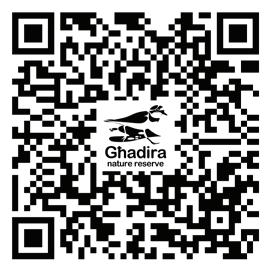
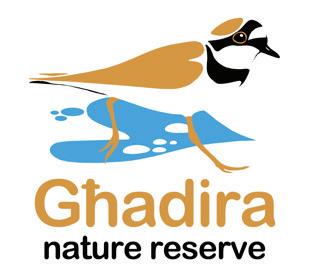
at our reserves Opening hours September to May Monday, Wednesday & Friday 2pm-7pm Saturday & Sunday 10am-4pm Entrance free (donations welcome!) More info at http://bit.ly/GħadiraNatureReserve Reserves
Nature
Aron Tanti 6 Bird’s Eye View 74 • December 2022
An
adult Grey Heron resting at Għadira Nature Reserve
Crimson-speckled Flunkey

Most moths are drab coloured, generally browns, greys and blacks. Well it makes sense: as most moths fly at night, what’s the point of being colourful? Better to have earthy hues to camouflage them while they sleep by day. But there are exceptions, because some moths fly by day. One such is the exquisite Crimson-speckled Flunkey, a small white beauty so artistically flecked in red and black you’d think we photoshopped the picture! We didn’t, this jewel really does exist, and it could be out there now looking for autumn flowers. One of the foodplants of its caterpillar is Borage (Fidloqqom), a plant most consider a useless weed. But of course in BirdLife vocabulary the word ‘weed' does not exist.
Common Kingfisher Għasfur ta’ San Martin Alcedo atthis

Few people know that we get Kingfishers in Malta. It’s true we don’t have the bubbling streams these birds seek, but kingfishers are migratory, so they must pass through places that don’t always provide ideal habitat. So a few Kingfishers do turn up here for a rest and perhaps a snack before flying on. Naturally they won’t turn up in your garden (unless you have a lake there!) but a wetland like Għadira draws them like magnets. Having nested early in mainland Europe, Kingfishers start flying south even in high summer, and begin to appear at the nature reserves and around our shores. If they find good conditions (no disturbance and plenty of small fish) some even stay the winter, as happens every year at Għadira and our other nature reserves.
The Common Chiffchaff is a tiny bird, even a sparrow is massive compared to it. The Chiffchaff is roughly the shape and colour of a leaf, indeed Chiffchaffs and related species are known collectively as leaf warblers. Chiffchaffs are always flitting restlessly among foliage, on compost heaps and pond edges along valley beds, in their constant search for minuscule insect morsels. We see Chiffchaffs in autumn and winter, hence the reference to winter in their Maltese name. The ‘vjolin’ refers to their repetitive siff-saff, siff-saff, siff-saff song, perhaps reminiscent of someone sawing away at a violin. At Għadira the Chiffchaff’s song is one sound you’re almost guaranteed to hear in winter, especially if the sun is shining.

Bird’s Eye View 74 • December 2022 7
Crimson-speckled Flunkey
Common Kingfisher
Vjolin tax-Xitwa Phylloscopus collybita
Common Chiffchaff
Common Chiffchaff
Is-Sbejħa Utetheisa pulchella
Victor Falzon
Aron
Tanti
Victor Falzon
WORDS Victor Falzon Naturalist & BirdLife Malta Field Teacher
... to give youth a voice It's Time
BirdLife’s journey and the state of the world

One hundred years ago, a group of mindful people gathered and decided it was time to protect birds and their habitats at the international level. That was the beginning of BirdLife International. We have come a long way since then and, today, we count 117 BirdLife partners, including BirdLife Malta, protecting birds and their habitats through research, education and campaigning. In the last 10 years, hundreds of globally threatened bird species and thousands of natural sites have been protected, but time is not on our side. Human activities are causing declines in bird species with more than one in eight now at risk of extinction.
But it’s not only birds that are in a race for their lives but also people of the next generation. Climate change is causing natural disasters and the unsustainable use of natural resources is jeopardizing the legacy we will pass to future generations. Young people represent our future and an over-exploited planet represents theirs. Yet their values and priorities are often not taken into account in decision-making processes. No wonder they feel hopeless, unheard and unmotivated. With the right knowledge, skills and tools, however, young people have all it takes to reclaim what is rightfully theirs.
YOUth Nature
Thanks to the support of Erasmus+, we gave life to the project It’s Time. which is coordinated by BirdLife Malta in partnership with BirdLife International, the Polish Society for the Protection of Birds (OTOP, BirdLife in Poland), Romanian Ornithological Society (SOR, BirdLife in Romania), and Station Europe. The project aims to create an International Youth Leaders Council whose members will be trained and equipped with skills and knowledge to initiate and lead a series of meaningful actions to protect nature worldwide. Youth Leaders are provided with leadership and communications training courses and are offered ways to develop a care for nature and birds through hands-on activities and nature mindfulness. We believe that bringing together many young people from different cultures, combined with a safe space to reflect and think, will create the perfect conditions for young people to develop impactful and innovative ideas to protect nature.


8 Bird’s Eye View 74 • December 2022
Educate
It's Time – an Erasmus+ project needs
Aron Tanti
Alessandra
Loria
Goldcrest
BirdLife World Congress 2022


What better time to launch the project than during
the support of Erasmus+ and Canon, we took the first step towards the creation of the Council

42 Youth Leaders and education staff from 19 countries paved the way for what will be a collaborative and


international youth network to advocate for the protection of birds, their habitat and biodiversity. The week was packed with team-building sessions and seminars about the environment’s status, challenges and solutions for the years to come, communication, vlogging and video editing workshops. Other training and workshops are planned for 2023, but the ultimate goal of It’s Time is to make the Youth Leaders Council a self-sustained organism that will grow and flourish after the end of this Erasmus+ project.
Among the activities the Youth Leaders were involved with during the World Congress was a role-play activity inspired by the situation at Malta’s Blue Lagoon (Kemmuna) where the over-commercialisation of the area threatens the fragile ecosystem and its vulnerable marine species including the Yelkouan Shearwater. The Youth Leaders put themselves in the shoes of environmentalists, tourists, politicians and business developers and worked together to find a common agreement to safeguard the ecosystem and the Maltese economy.
Exciting work awaiting back home
Creating a local youth community, eager to be involved in nature-based activities and contribute to nature advocacy, is one of the most important yet challenging tasks of the Youth Leaders. Studies found that by age 15, connectedness with nature decreases to a minimum, to only come back during the 30s. Here in Malta, where urban sprawl is contributing to the deterioration of people’s mental health, the situation is even more critical. Without connection with nature, young people lose not only interest in protecting it, but also lose hope for a better future. But through hands-on and experience-based activities, young people can reconnect with nature and, with the right leadership, feel empowered to advocate for change. With BirdLife Malta’s support, a few motivated youngsters are planning a full year of events for 2023 specifically aimed at people between 16 and 25 years old. Workshops, nature walks, hands-on conservation work, citizenscience projects and involvement in family events to raise environmental awareness are just a few of the opportunities young people will be offered. It’s time to help youth rediscover their connection with nature, give them a voice and work with them to win the most meaningful battle: saving our planet!
If you love nature, are 16-25 years old, and would like to join our youth group, send us an email to education@birdlifemalta.org.
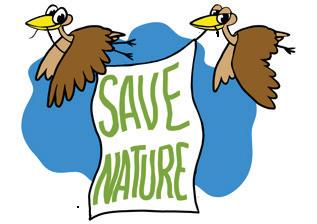
Bird’s Eye View 74 • December 2022 9
BirdLife’s 100th anniversary? On the occasion of this unrepeatable event, and thanks to
and, during the BirdLife100 World Congress,
powerful
WORDS Alessandra Loria BirdLife Malta Education Officer
Annie Simons
Victor Falzon
Alessandra
Loria
Youth group in Malta
Following the resounding success of our first Nature Guardians course, we are pleased to announce that we will be running the programme again in spring 2023.
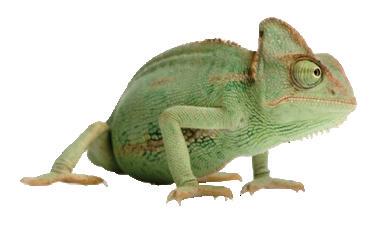
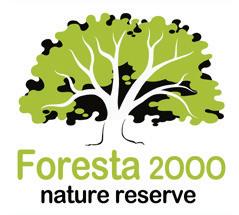
Spread over 12 consecutive Saturday mornings, the course will introduce the participants to nature protection, specifically the role of the managing warden at our nature reserves. The course will in fact take the participants to our four sites namely Salina, Simar, Foresta 2000 and Għadira with a new topic on the cards each week. The course is based mainly outdoors and has a strong hands-on approach.
Anyone aged 8 to 11 years can register their interest in participating by sending an email to mark.gauci@birdlifemalta.org. The course fee is €260, which includes all course materials, transport and also a Nature Guardians T-shirt, cap and sticker booklet.
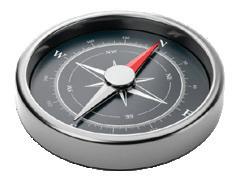



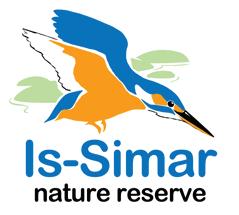



10 Bird’s Eye View 74 • December 2022
Campaign
Tracking the elusive Chameleon
Researching Mediterranean Chameleon movements and distribution at BirdLife Malta’s nature reserves
Although the Mediterranean Chameleon is not endemic to Malta – it was introduced from North Africa in the 19th century – it has since become part of our natural environment. BirdLife Malta’s nature reserves are a great place to observe Mediterranean Chameleons and for this reason we embarked on a study to learn more about their behaviour.

What is the difference between Chameleon behaviour in the different nature reserves, if any? How large are their hunting and breeding areas? Do they affect other reptiles and insects? These are just some of the questions that prompted us to research Chameleon movements and distribution. This was made possible thanks to funding from the STEM Community Fund 2021 (managed by Esplora) who were more than happy to support such a research project.
Several Chameleons were tagged with small radio transmitters in summer of 2022. These transmitters weigh close to nothing, ensuring no interference to the tagged specimen. Once tagged, a daily search was then performed by using an antenna tuned to the frequency of the tag.

Two specimens of Chameleon at Għadira Nature Reserve were monitored for around 20 days. They moved over the area of about 170m2 with the maximum distance between end points being 23m and 15m respectively. Most of the time the Chameleons were found on Tamarisk, but also Lentisk, African Tea tree and Golden Samphire.
Interestingly, we noticed that the behaviour of Chameleons is different between nature reserves. The Għadira specimens were very calm and quiet while the specimens at Simar were quite hostile, with faster movements and resting in hard-toapproach spots. Aggressive and avoidant behaviour of the Simar Chameleons could possibly be caused by an increasing number of feral cats in the Xemxija Bay area.
This theory is further supported by the different height recordings of the Chameleon's location, and this despite similar habitat and flora at both research areas. At Għadira, the specimens were found at an average height of 0.3–0.4m from the ground, while those at Simar were at an average height of 1.2m – they are possibly staying furthest from the ground to avoid falling prey.
The GPS tags were on collars that were attached loose enough to allow Chameleons to swallow prey. Every day, equipped with the receiver, we followed the movements of the animals, and once tracked, the GPS coordinates, the flora species it was found upon and the height from the ground were recorded. The research was carried out in collaboration and under the supervision of the University of Malta, namely Prof. Louis F. Cassar and Dr Adam Gauci. All the work was covered by a nature permit issued by the Environment and Resources Authority (ERA).
In 30 days, one specimen at Simar Nature Reserve covered an area of approximately 81m2, with maximum distance between end points being around 18m – impressive for such a small animal. The specimen was recorded on a variety of trees and shrubs, including Olive, Holm Oak, Tamarisk, Lentisk, African Tea tree, Golden Samphire and Aleppo Pine.
Graph showing recorded height vs tracking days

The fascinating thing about such research is that while some of our questions are answered, others arise which we hope to address in future projects. These results will help BirdLife Malta plan the best possible management scenarios for the flora and fauna at our nature reserves.

Bird’s Eye View 74 • December 2022 11 Research
WORDS Vera Tokmakova Nature Reserves Visitor Assistant
Mediterranean Chameleon with tag
Milena Berrazina
Tracking process using an antenna and receiver
Vera Tokmakova
The Mediterranean Chameleon can be found at BirdLife Malta's nature reserves
Victor Falzon
Vera Tokmakova
A wintry stroll at Tal-Wej
Nature taking over
Despite the development on all sides, Tal-Wej has an unexpectedly open feel, and that’s because it sits right on the edge of the Great Fault, so the view northward is open and unobstructed. And at 21 hectares the area is a decent size.

The site is largely flat and in the past was no doubt all under cultivation, evidenced by the many toppled rubble walls that enclose what was once a mosaic of fields. Judging by the stunning set of enigmatic ‘cart ruts’ and rock-cut tombs present here, it is also clear that people did more than just farm the area. Some of the land is still worked today, but time and the elements have washed or blown away much soil, and many fields have since reverted to nature. They are now mostly rocky steppe, with patches of garrigue where the underlying upper coralline limestone has been exposed.
Healthy mix of habitat

This healthy mix of habitats is a joy for the nature lover. Tal-Wej is criss-crossed with tracks, so you can explore without needing to stray off the path. In midwinter look for the tall stalks of the Branched Asphodel, with its clusters of stripey white flowers, and maybe blue-lilac flowers of the not-so-common Crown Anemone. In the damper spots, lovely hosts of Annual Daisy sport a thousand flowers. In late winter, notice the red patches of Blue Stonecrop (don’t expect to see any blue) and in some areas, a sprinkling of squat Lentisk shrubs, by now largely devoid of the berries so sought by small birds in autumn.
Along the tumbled rubble walls many annual species vie for shelter and a spot in the sun. Borage, Wild Carrot, Crown Daisy, Boar Thistle, Field Marigold and Red Campion, to mention a few, ensure that not a square inch of ground remains bare. Whether they’ll be in flower depends on the time of year you visit, but any time from December to May you are bound to meet at least a few in full bloom.
A varied clientele
If you visit on a still, sunny day these flowering plants will be hosting a variety of winged clients intent on a meal. These include butterflies like Large White, Clouded Yellow, maybe a Bath White or Swallowtail, and any number of hover flies, shield bugs, mason bees and honey-bees, possibly even a groggy Carpenter Bee freshly up from her winter sleep.
And helping themselves to this invertebrate bonanza are of course the birds. In Malta, birds are more numerous in winter than in summer. Most of them are scarcely larger than sparrows, but they make up for their size with their often very distinctive voice. And at Tal-Wej you are bound to hear several of them.
I have never been there in winter without logging White Wagtails, Common Stonechats, Common Starlings, Meadow Pipits, Common Chiffchaffs, Black Redstarts and European Robins, sometimes even a Common Kestrel hovering overhead.
If the rain hasn’t been miserly, there will be freshwater rockpools. Seasonal rockpools are a godsend for several species of plants and animals that would otherwise not even exist in Malta. Water Crowfoot pokes its white-and-yellow flowers from the surface, and a closer look into the water may show up a few diaphanous Fairy Shrimps. And, even smaller, tiny pinheads of life darting about in small jerks: water fleas.
From the mists of time
But one special resident renders Tal-Wej virtually unique in Malta and worth every protection. After a few showers, a large rain pool forms in one particular rocky depression. It’s shallow but often murky due to the muddy bottom. And out of that mud, for a few weeks every so many years, emerges this creature from prehistory: the Tadpole Shrimp, a species that has survived virtually unchanged for 250 million years. That’s ten times the age of the oldest rocks that form our Islands – no wonder naturalists call it a living fossil.
Despite its protection, Tal-Wej has its fair share of threats. Two trapping sites annually harvest scores of finches, and every year the inexorable building sprawl encroaches some more. Some farmers find the water in the Tadpole Shrimp rockpool convenient for irrigation, and pump the pool dry. So yes, the site needs serious law enforcement if we and future generations are to continue enjoying Tal-Wej and its natural attractions.
12 Bird’s Eye View 74 • December 2022 Care
Teacher
WORDS
Victor Falzon Naturalist and BirdLife Malta Field
Seasonal freshwater rock pools harbour a variety of aquatic life
MOST HAVE NEVER HEARD OF TAL-WEJ, LET ALONE ITS HERITAGE VALUE. BUT THEN YOU WOULDN’T EXPECT TO FIND A NATURAL GEM HEMMED IN ON THREE SIDES BY THE RESIDENTIAL SUBURBS OF MOSTA AND NAXXAR AND BY A MASSIVE HARDSTONE QUARRY ON THE FOURTH SIDE. BUT GEM IT IS – AND OUR NEWEST NATURA 2000 SITE TOO – SO IT’S WORTH A VISIT. FOR BEST RESULTS PICK A CRISP WINTER MORNING LIKE I DO.
Victor Falzon










Bird’s Eye View 74 • December 2022 13
Branched Asphodel
Crown Anemone
Clouded Yellow
One of the rock-cut tombs at Tal-Wej
Victor Falzon Desirée Falzon Victor Falzon Aron Tanti Aron Tanti Aron Tanti Victor Falzon
Tadpole Shrimps Water Crowfoot
Male Common Stonechat
Victor Falzon
Meadow Pipit
Victor Falzon Victor Falzon
1-2









14 Bird’s Eye View 74 • December 2022 Events
10 Sep 2022 Participants attended a creative workshop held at Buskett about biodiversity loss and connecting with nature. This was held in preparation for the dance performance Future Dancing: Moving with Nature which was performed as part of Science in the City 2022. The workshop started with an immersive walk led by BirdLife Malta field teacher Desirée Falzon, after which artists Sandra Mifsud, Rachel Calleja and Douglas Comley helped artists and young people to start their creative process and prepare for the dance performance, which incorporated the ideas and art developed in this workshop.
11-16 Sep 2022 BirdLife Malta joined BirdLife Partners from 117 countries in Cambridge and London at the BirdLife100 World Congress to mark BirdLife International's 100th anniversary, where the BirdLife International Youth Leaders Council was also created. We shared the successes of BirdLife Malta, networked with our international Partners, and got to meet all the Youth Leaders. On the 100th Anniversary, BirdLife Partners also launched a new, ambitious 10-year strategy to save nature.
Sandra Mifsud
Alessandra
Loria
30 Sep 2022 BirdLife Malta was at Science in the City 2022, one of the most popular science and art festivals in Malta, where our education team led a number of exciting and creative activities! Visitors enjoyed learning about Flamingos and Blackbirds. One lucky family won a year’s membership in BirdLife Malta following a fun competition. Events also included the dance performance Future Dancing: Moving with Nature
Oct 2022 We participated in EuroBirdwatch22, the biggest annual autumn BirdLife event in Europe and Central Asia dedicated to the protection of migratory birds. On Day 1 we shared a bird ringing session, followed by birdwatching at Għadira Nature Reserve. On Day 2, we enjoyed an afternoon eco-picnic at Buskett while keeping an eye on the sky for raptors and other migratory birds. Through experiential learning, game sessions and even an online street art exhibition, we learned a lot about this important season as millions of birds cross the European continent and fly to Africa.
Nature Reserve. The day trip ended with a delicious late lunch in a Noto agritourism complex.
1-2 Oct 2022 The LIFE PanPuffinus! team participated in the Marine Life Fair at the National Aquarium of Malta. Plastic waste is one of the biggest threats to the world's marine biodiversity, especially in Malta where the Yelkouan Shearwaters nest. Visitors learned how plastic and other human-created waste affect seabirds and what to do to mitigate our impact on ecosystems.
8 Oct 2022 Our first nature walk in Sicily after the pandemic. Departure
by catamaran was early (5am) but this didn’t scare participants away who made an 8km circular hike at Avola's Cavagrande del Cassibile
Elisa Von Brockdorff
Aron Tanti
Francesca Visalli
Upcoming events BirdLife Malta’s youth group will be having an exciting Christmas event at Salina Nature Reserve. Quizzes, games and hot chocolate are some of the things to expect. You will also learn a lot about wintering birds, and we will prepare some healthy cookies to support them during the cold season. 11 Dec 2022 Christmas needs to be celebrated with everyone! So we invite Klabb Ħuttaf members to our Simar Nature Reserve to spend some time together to watch nature, enjoy a treasure hunt and other exciting games. All this will be held in a Christmas atmosphere and accompanied by delicious Christmas treats! 17 Dec 2022 Join at http://bit.ly/joinBLM Donate at http://bit.ly/donate-to-birdlifemalta Support at http://bit.ly/Becomeasupporter Volunteer at http://bit.ly/volunteerwithBLM Get more details at http://bit.ly/joinanevent or email events@birdlifemalta.org or call +356 2134 7646 Want to join an event? Want to help us continue work?
Marcel Tellus
23 Oct 2022 A memorable event was held to celebrate World Mental Health Day. Participants of the Walk 4 Mental Health met at the Triton Fountain in Valletta and walked to St George's Square, where organisations showcased their work to support people in difficult times. It was a honour for BirdLife Malta to be part of such a supportive network of organisations caring for our community mental health.

13 Nov 2022 Our Events & Activities Group led another amazing walk to welcome the autumn season starting from the Majjistral Park Visitor Center, continuing to the Għajn Żnuber Tower through the Ras Il-Waħx area, and then along a route to the west of the park. After a stormy and rainy night, the weather was perfect for a nice 6km hike through Majjistral wuth its many rural and military features, its natural caves and prominent seacliffs, and its unique flora. Everyone enjoyed the walk and the chance to explore this part of Malta.

29-30 Oct 2022 An unforgettable Halloween weekend at Salina Nature Reserve. On Saturday we celebrated with families and on Sunday with youngsters. The Salina team entertained children and adults by showing salt and soil under a microscope, showing animal skeletons and explaining how special lamps work to attract insects. Through informative quizzes, participants learned a lot about nature and about Halloween itself. We concluded the afternoon chatting and watching a movie.
20 Nov 2022 Esplora Interactive Science Centre dedicated a whole weekend to celebrate World Children’s Day by offering some of its most popular science shows. The BirdLife Malta education team joined the event to speak about migratory and resident birds, play engaging memory games with the visitors, and educate more kids and their parents about the variety of things birds feed on and their ways of finding food. We truly enjoyed the day and hope that participants did as well.
Produced by BirdLife Malta and presented by Communication Manager Nathaniel Attard, NATURAlment will be a weekly programme aired on NET TV to celebrate BirdLife Malta’s 60th anniversary year.




This exciting project aims to raise awareness on the beauty of nature and the importance of protecting and caring for our biodiversity. Topics of the TV series are varied and will include guests in studio together with informative features which will be aired in between discussions. Other environmental NGOs and activists will also be invited. The first programme will air on Thursday 29th September 2022 as NET Television’s autumn schedule kicks off! Every Thursday at 21:35 on NET TV

Bird’s Eye View 74 • December 2022 15
Koroleva
Nastasya
Leysan Sharafutdinova
Marcel
Tellus
Leysan
Sharafutdinova
Testing the waters...
Covering less than 1% of Maltese territory, wetlands are one of our rarest habitats. All life on Earth needs water, so wetlands invariably support a rich flora and fauna. As part of our driving mission to increase biodiversity, BirdLife Malta is currently restoring part of the former wetland at Salina Nature Reserve. This exciting project involves the creation of ponds and creeks that within months should be teeming with new life. Hitting the right balance between salinity and freshwater is crucial, so regular testing of the new water bodies is necessary, as the BirdLife officials in the picture are doing.

 Jody Fiteni
Jody Fiteni
Jody Fiteni
Jody Fiteni








































































 Jody Fiteni
Jody Fiteni
Jody Fiteni
Jody Fiteni